QuestionI have a 1 year old "standard" aussie and just bought what I was told a "toy" aussie. I was wondering if you could tell me a little about the toy. I never knew there was such a thing. Thank you.
AnswerThere is no "standard size" Australian Shepherd. There is the Australian Shepherd, a purebred breed of dog recognized in the American Kennel Club, the Australian Shepherd Club of America, the United Kennel Club and the member clubs of the international FCI organization.
From the Australian Shepherd, a group of individuals began the process of miniaturization. In the late 1970's they began producing what they labeled as "Miniature" Australian Shepherds. This group eventually formed their own set of registries, but to date have yet to be accepted and recognized as an independent breed by AKC, ASCA, UKC or the FCI members.
Along the way, another group of financial minded folks decided that if miniatures were popular, there was a place to make even smaller dogs. These are referred to as "Toy" Australian Shepherds, but it should be noted that they are not an actual recognized variation, even among the Miniature registries.
The reason there seems to be a trend towards miniaturization any breed is simple: Space is limited in growing urban environments. People want a companion dog who can be a lap dog, be content in smaller houses and in smaller yards. Smaller dogs are "cuter" because they retain puppy-like characteristics. It is easier to clean up after a 10lb dog than it is to clean up after a 50 lb dog.
So, for the financial oriented breeder the decision is simple--go for small because it sells well and for more money.
Therein lies the problem. Basically there are two ways to achieve smaller sizes--by inbreeding on naturally small dogs or by cross breeding to other small breeds to rush the miniaturization process. Obviously each approach has its problems.
Inbreeding reinforces desired traits, but also brings out the hidden genetic problems. So generations of inbreeding can cause a higher occurance of inherited problems like hip dysplasia, epilepsy, cataracts, auto immune problems and so on.
The other means is to cross breed. Some folks seem to think that if a dog looks sort of like an Australian Shepherd--merle coloration, wedge shaped head, longish coat and docked tail, that it must be an Aussie. Just because it waddles and quacks, doesn't mean it is a duck!
Some of these breeders will incorporate other toy sized breeds to hurry the miniaturization process. This amounts to essentially breeding a mutt and fraudulently selling it as a purebred dog. A good way to make sure this doesn't happen is to ask the breeder for records showing that several generations of dogs have been DNA tested proving that their parents are the dogs represented on the pedigree. This is a common place requirement in legitimately recognized breeds like the Australian Shepherd.
Reducing a dog to a toy size also can increase reproduction problems. Females may only be able have tiny litters of one to three pups, sometimes only by C-Section. Toy sized puppies can be born with a myriad of congenital defects, some apparent, some not. Remember, in nature, change takes place slowly. The breeders of miniature and toy breeds are forcing changes in the structure of their dogs at an astronomical pace.
The toy breeders are attempting to produce an entirely new breed variation on just a few generations at the expense of the health and well being of the animals. Reduced size brings about profound changes in soundness--such as the need for Cesareans--because of the rapidity of the change from large to small. The dog's genetic code does not necessarily change in proportion to the reduction in size.
Toy dogs are often bug eyed or wall-eyed. The reduction in head size occurred faster than the reduction in eye size, thereby moving the eyes around to the sides of the head. Dogs bred for small size often have nervous system difficulties such as epilepsy.
Vets can provide you with a long grocery list of problems that they frequently see in association with the extreme miniaturization of a breed.
There are no doubt, healthy, happy miniature and toy sized Australian Shepherds, but how many others are having problems? Ask the breeder of the toy dog how many of the offspring he or she has followed up on throughout their lives? What sort of health clearances did these dogs have and how often were they checked. What is the mortality rate of the puppies?
What it comes down to is this: It has taken generations of careful breeding to produce consistency in the Australian Shepherd.
The goal of the original breed was to maintain a working ranchdog who was healthy and had a temperament suited for herding livestock and protecting the family home. Reputable breeders do not jump on the newest fad bandwagons and they are not motivated by profit.
Conscientious breeders always breed by a standard of ideals called the Breed Standard. No such document exists for a "Toy" variation.
There are already plenty of existing toy breeds, each with their own set of worries and problems. The Australian Shepherd should not be included among those breeds and those who are attempting to do so are not motivated by the breed's best interest nor are they concerned with the future happiness of the owners of the dogs.

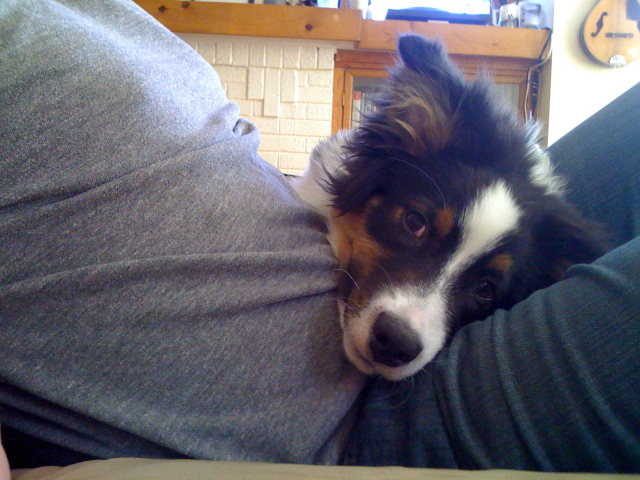 Aussie diet/potential allergies
Question
Dog
We have a 5.5 month old male Aussie with d
Aussie diet/potential allergies
Question
Dog
We have a 5.5 month old male Aussie with d
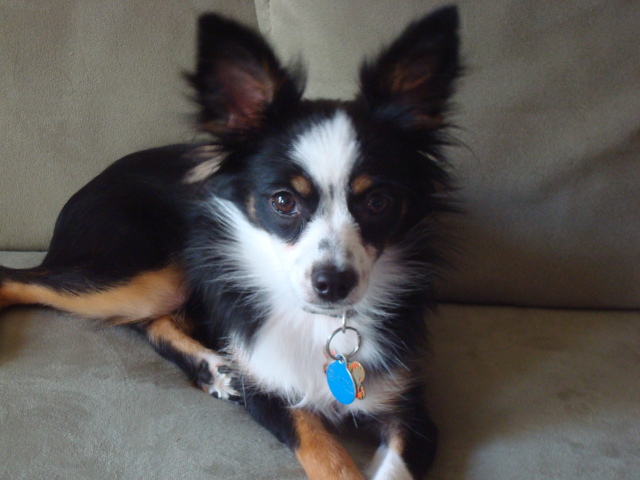 toy aussie
Question
Toy Aussie
We have a toy aussie, he is one yea
toy aussie
Question
Toy Aussie
We have a toy aussie, he is one yea
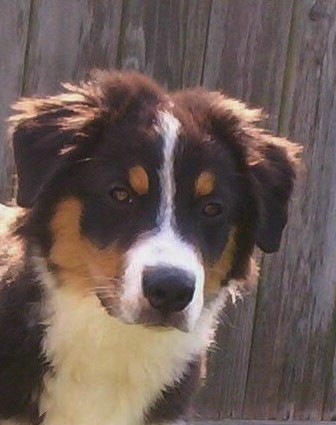 training age
Question
Zak
I have an aussie puppy that is 4 months an
training age
Question
Zak
I have an aussie puppy that is 4 months an
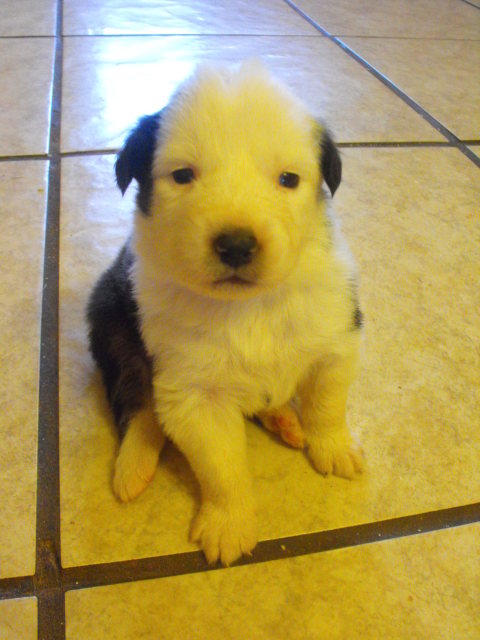 Overly White Face in A Tri Colord Dog
Question
my new puppy
I am going to be getting a female
Overly White Face in A Tri Colord Dog
Question
my new puppy
I am going to be getting a female
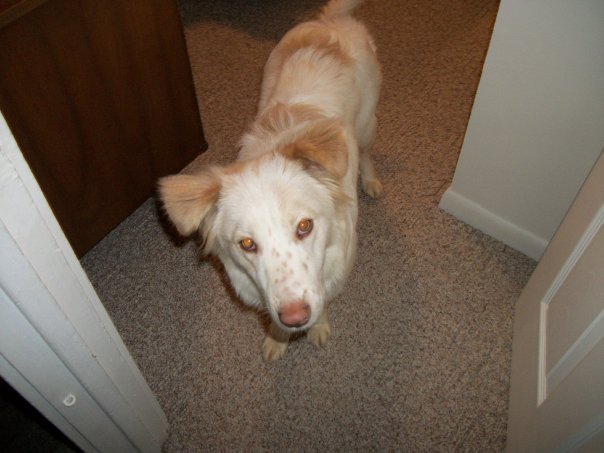 Australian Shepard/Cattle Dog Mix
Question
Roxy
Hi there. I recently adopted a dog from a
Australian Shepard/Cattle Dog Mix
Question
Roxy
Hi there. I recently adopted a dog from a